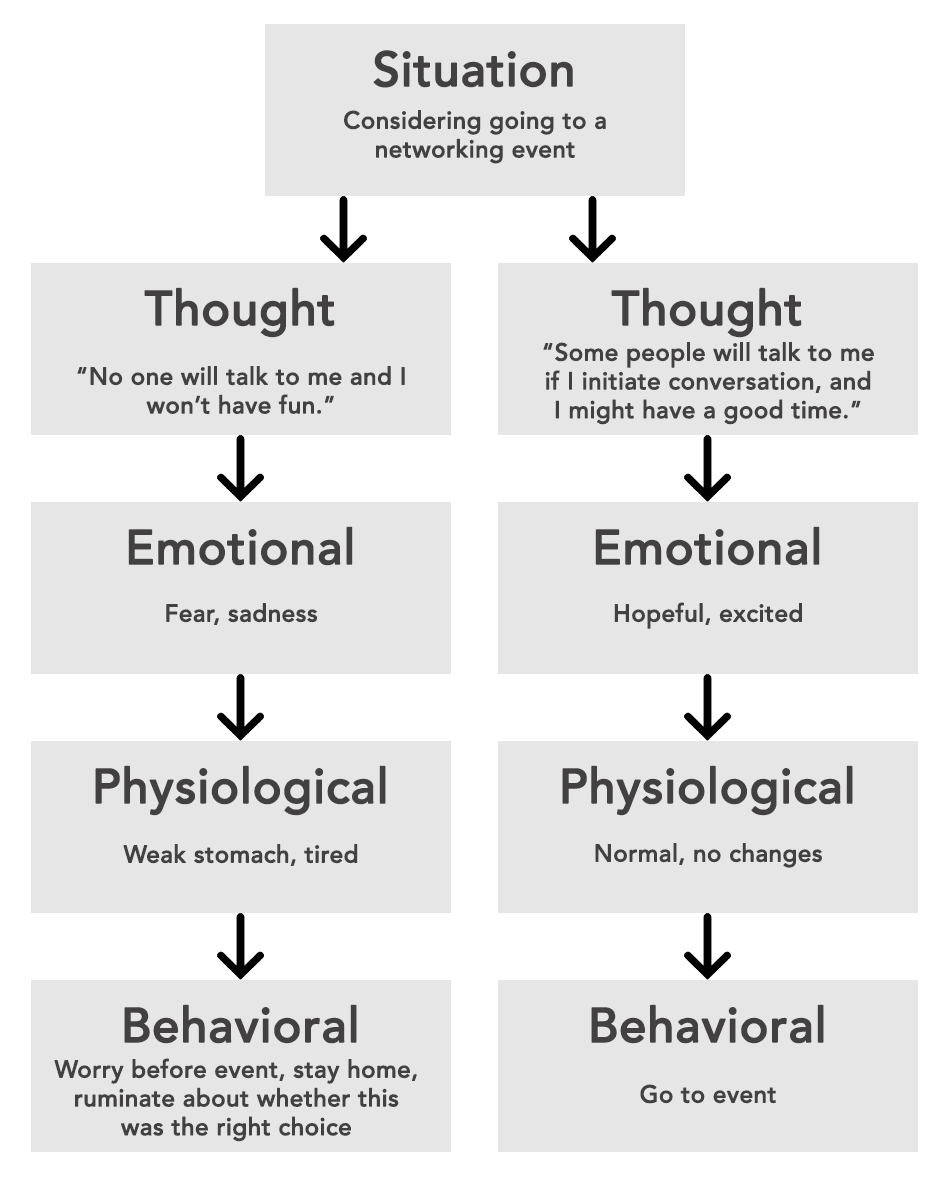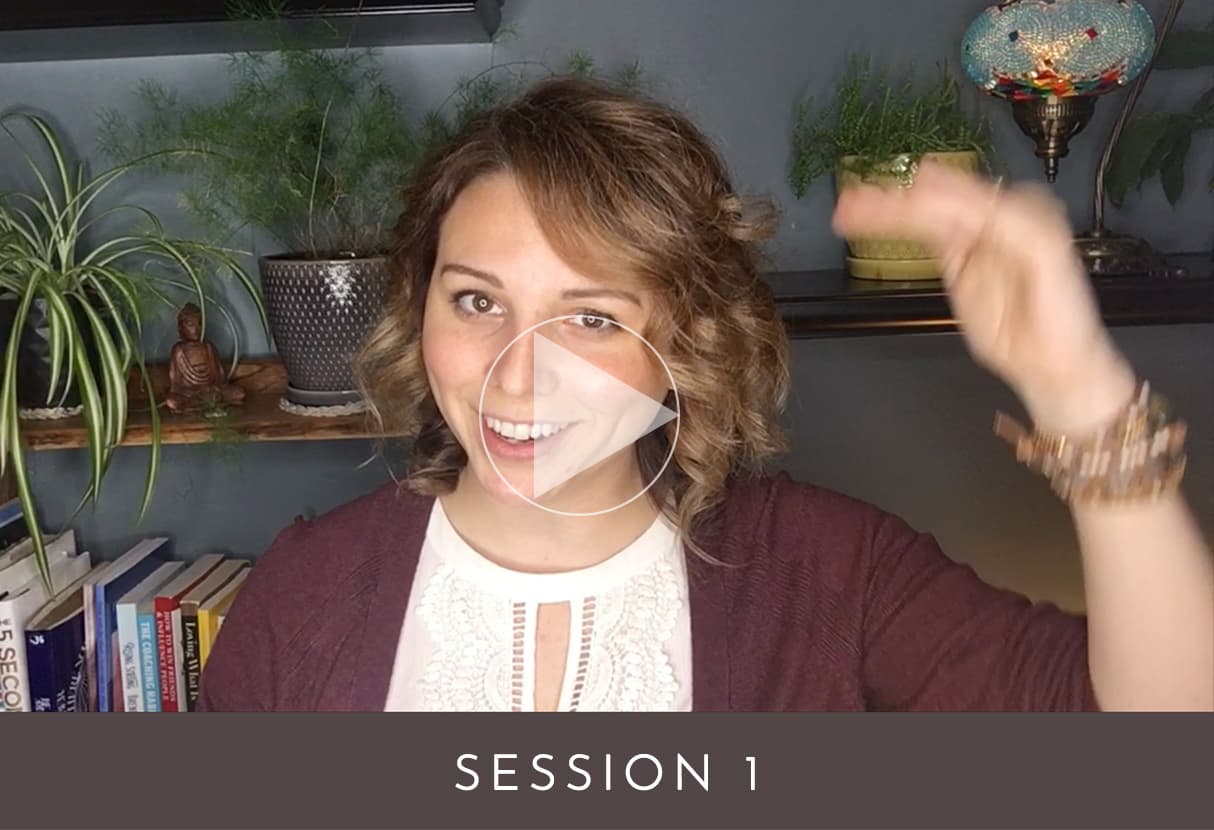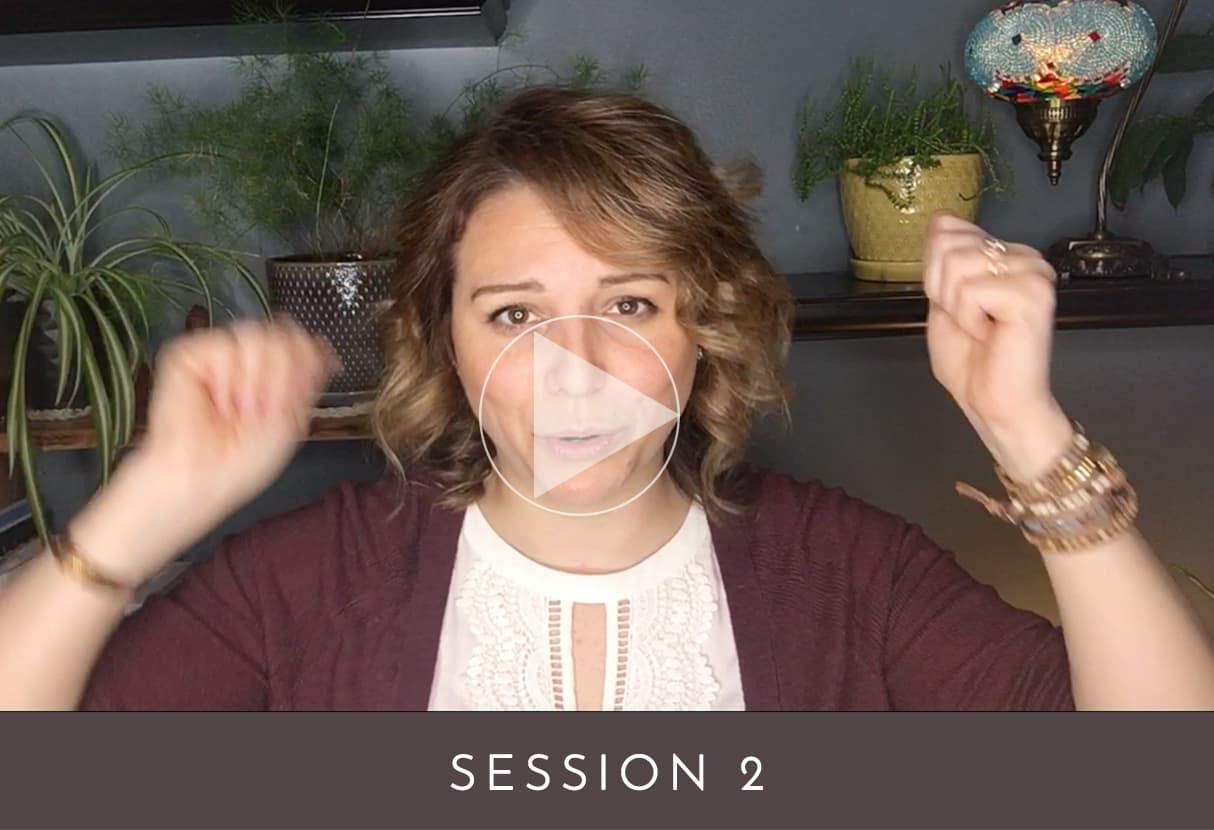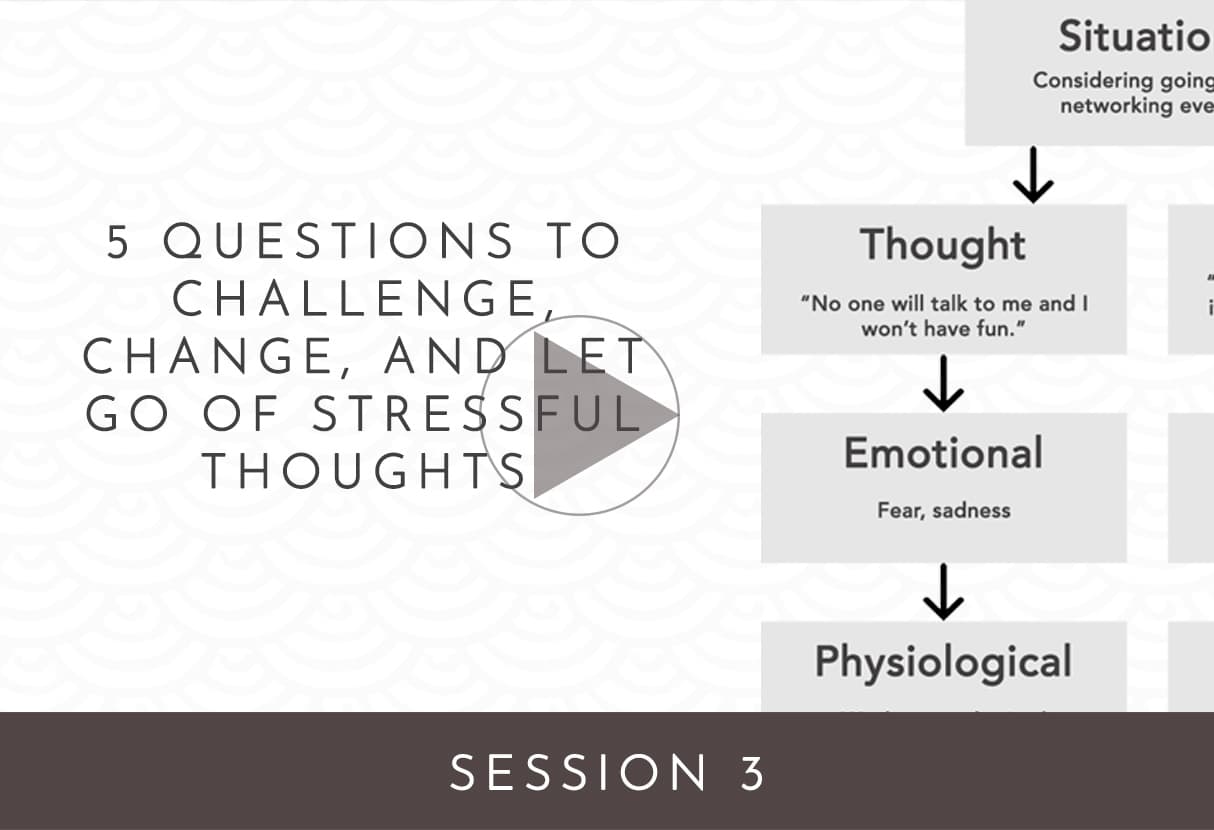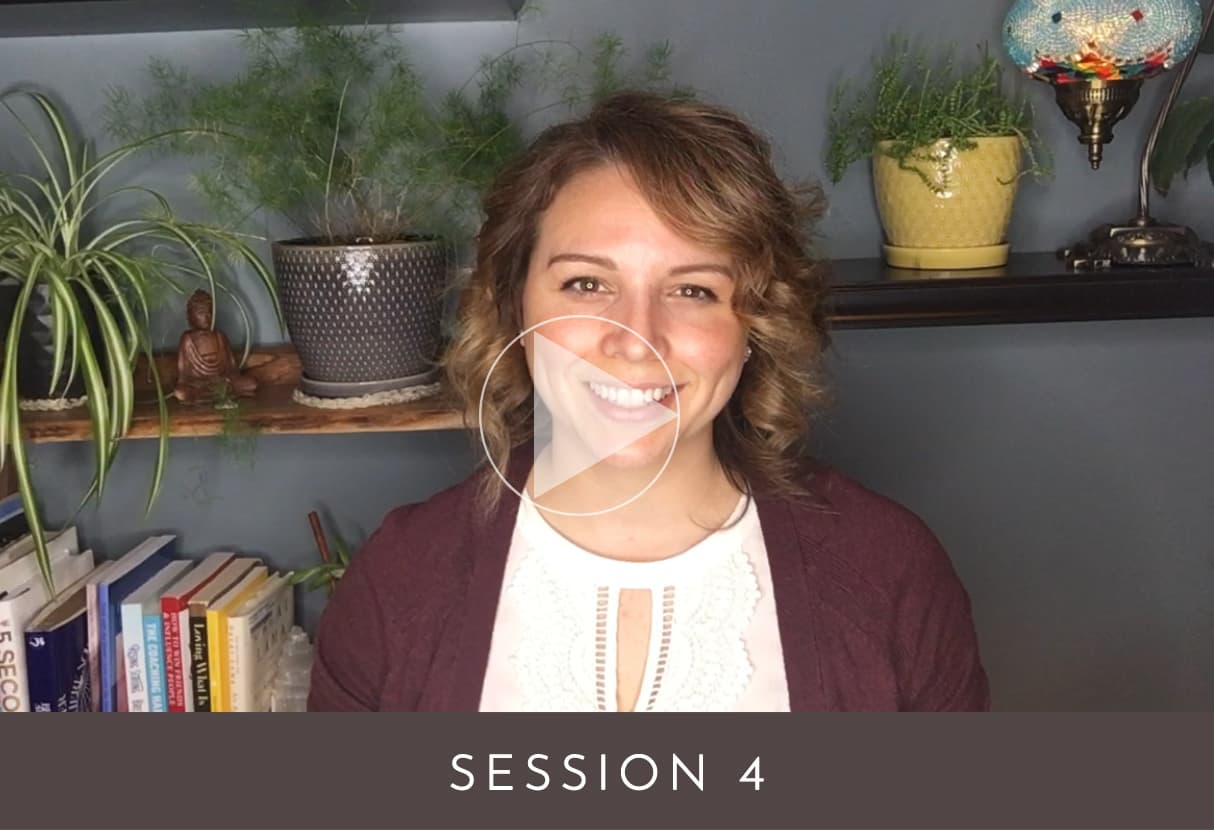This mini course reflects some of the fundamental principles from my signature one on one coaching program. You will experience a bit of what I teach in these in depth, personalized sessions as you work your way through the course.



STRESS DETOX
MINI COURSE



Welcome to Session 3 of the Stress Detox Mini Course!
Session 3 teaches us how to challenge, change and let go of stressful thoughts causing us worry, anxiety, self bullying or indecision.
Before starting this week’s exercise, we’ll first take a look at how our stressful thoughts relate to the situations that trigger them, the resulting emotions and behaviors, and how we can change our perspective and relationship with this process in order to learn to choose a response instead of automatically reacting to stressful situations.
In my experience, this week’s exercise is the most powerful tool in eliminating stress and anxiety.
Start Owning Your Emotions
Other people’s actions, our own decisions, stressful situations, or even bodily sensations can all lead to fear, anger, sadness, irritation or other afflicting emotions. We then make the mistake of thinking that these things cause our emotions. We think:
“My sister made me mad when she said that about me.”
“This sensation in my body is making me afraid.”
“The guy in the car that cut me off made me pissed off.”
But there’s an important step missing in this line of thinking, and without understanding it we fall victim to our circumstances. If we view the source of our feelings as something external or even something we did in the past, we lose power over our emotional reactions.
It’s as if another person, or a situation outside of our control becomes our puppet masters, and we’re simply along for the ride. It’s as if we don’t own our emotions, but that they are created and controlled by something or someone outside of us.
Understanding the true source of our emotions gives us back control, gives us more options, and creates space between action and reaction allowing us to respond with conscious intention.
Exercise #3: 5 questions to challenge, change, and let go of stressful thoughts
Now that we’ve learned to turn off or reverse the stress response with a calming breathing technique, experienced giving ourselves some space between worry thoughts and true selves with meditation, and understand how our thoughts trigger our emotions – the next step is to change, accept or let go of these thoughts.
The most powerful tool to do this is reframing.
Reframing is a way of changing the way you look at something thereby changing your experience of it.
As we’ve learned, our thoughts about a situation cause how we feel, and reframing can either turn a stressful event into a major trauma or a non-event.
We reframe by asking ourselves powerful questions. Here are the three most effective reframing questions to ask yourself in stressful situations:
Reframing question #1
What can I learn from this?
To put it another way, if the universe gave me this situation for a reason, what lesson am I supposed to be learning?
More often than not, when I ask myself this question the answer is usually “patience”.
When we find out what we’ve learned, we can turn any “negative” situation into a positive, maybe even worthwhile event by having learned from it.
Reframing question #2
What’s another way of looking at this?
Or it could be phrased as: what else can this mean?
This question gives us some space from the meaning we applied to the stressful circumstance and allows us to step outside the box.
Maybe your husband didn’t say thank you for dinner nor help clean up and you take this to mean that he doesn’t appreciate you.
What else can this mean? Well, it could mean that he is stressed from work and worried about his job and didn’t realize he hadn’t said thank you nor how much a clean kitchen meant to you, though he actually appreciates the time you spent cooking.
Reframing question #3
What is the worst that could happen?
This question isn’t meant to give you free reign to exaggerate possible outcomes, but to ask what realistically is the worst that could happen.
When we’re anxious and stressed we tend to catastrophize the worst case scenario.
But if you sit and think rationally what is the worst that could happen, 99.9% of the time the answer is not “death”. (If a realistic worst-case scenario is death, then yeah, you probably don’t want do that thing.)
But for most situations it isn’t.
The point of asking this question is to:
- eliminate vague feelings of dread holding us back by clearly identifying what is making us stressed or afraid
- stop us from catastrophizing if we’re imagining an unrealistic outcome
- prepare us for what could happen by then asking ourselves the next very important question.
Reframing question #4
If things don’t turn out how I want, how can I cope with that?
Or to put it more accurately: how will I cope with that?
Maybe the worst case is that you lose your job. How could you cope with that? People lose their jobs and get new ones. You could too. What’s the first step would you need to take if this were to happen?
Maybe the worst case is that your friend would be mad at you. How would you cope with that?
Or maybe the worst case is that other people at the party might not talk to you. If that happens, what could you do about it? How bad is this outcome really?
The point is, the worst that could happen is only one of many possibilities. And even if it does happen, you can cope with it. You can make it work.
Reframing question #5
What’s the best that could happen?
We focus so much on what could go wrong and not enough time on what likely will go right.
Now that we’ve identified the worst that could happen, realized that it is not a guarantee to happen nor is it as bad as we thought, it’s time to visualize the best case scenario.
Action plan
Remember these questions!
- Write these questions down somewhere you will see them. Maybe on a post-it note on your desk.
- When you’re stressed, anxious, mad, sad, irritated… take them out and answer each of them in turn.
Coming up next
Do you beat yourself up for something you’ve done in the past? Are you carrying judgement or resentment toward someone?
We’ll be concluding this mini course in the final session with a profound way to kick stress, worry, judgment of others and self bullying through cultivating compassion with a loving kindness meditation.



Disclaimer: The information contained in this course is intended for educational and inspirational purposes only, and is made available to you as self-help tools for your own use personal journey toward health and happiness. It is not a substitution for medical advice, diagnosis or treatment from a licensed mental health professional.
Free access to the Stress Detox mini course is available for a limited time only.

